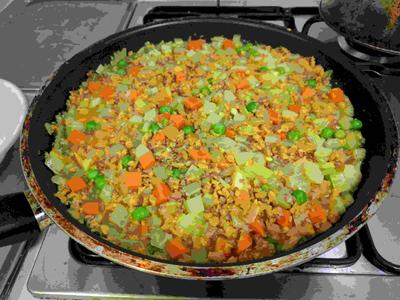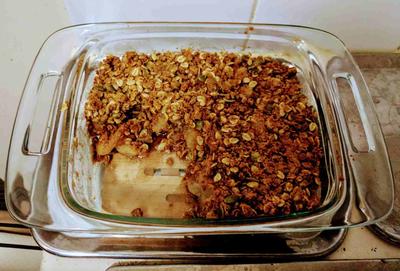10 Minute “Meaty” Vegan Moroccan Pilaf
10 minutes cooking time, that is, so to be honest it’s about 12-15 minutes total.
- This is my usual standby meal because it meats (heh) all my requirements:
High in fibre (wholegrain burgul and veg)
High in protein (soya mince and wholegrains)
Relatively low in calories
Filling meaty taste, but no animal products
Each serve contains two 75g Australian “serves” of vegetables
Only uses non-perishable ingredients, so no need to plan ahead
Faster to make from scratch than to get takeaway
Only uses one pan/pot

